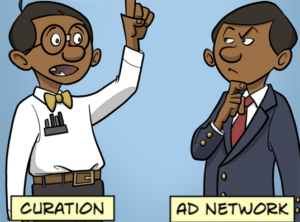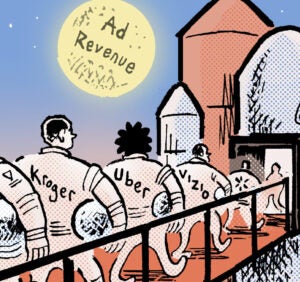 The native ad specialist TripleLift recently finished testing and hit the market with a cinemagraph format, in which there’s an instant of motion within a static image.
The native ad specialist TripleLift recently finished testing and hit the market with a cinemagraph format, in which there’s an instant of motion within a static image.
The cinemagraph format has existed for years, but its utility as an online advertising vehicle is just starting to permeate from social media platforms to the broader publishing community.
“The cool thing about [cinemagraphs] is that they’re typically made at a very high quality,” said Scott Messer, senior director of business development at Demand Media, which recently implemented cinemagraphs for its site in partnership with TripleLift.
The offering was developed by TripleLift in response to social media platforms investing in similar products, said company co-founder and chief strategy officer Ari Lewine. The first half of 2015 saw Pinterest’s “cinematic pins,” Kik’s GIF-marketing play and Facebook deploying cinemagraphs across its properties.
One of the key benefits for publishers, according to Messer, is that the format is “fairly lightweight from an ad size perspective. You’re not running video and it’s not Flash.”
Though Demand Media has so far only traded the product programmatically via TripleLift, Messer estimated that “in Q1 2016 [cinemagraphs] will be on our product map, and will be something you can work with us to design and deploy across our sites.”
One of the brands TripleLift is working with is Canon, which has been developing cinemagraphs all year, each created with a target audience in mind, according to marketing director Michelle Fernandez. Cinemagraphs are the common thread throughout Canon’s recent marketing efforts, including the company’s new site and the strategy for educating consumers about photography (and its lenses).
Fernandez didn’t break out specifics, but said, “We’ve seen an above-average CTR thus far in the campaign through both Triplelift and other media partners that are using (our) custom units.”
Messer said Demand Media data shows a 25% lift in user engagement with the cinemagraph format compared to static images – which trades in the same standardized inventory and at the same rate.
“I think it speaks to the latent demand,” said Lewine. “And the opportunity to scale interesting formats or ideas from social media.” He went on to explain that though Facebook has scale, it’s only one site.
Messer also said that platforms like Facebook, Twitter and Instagram have done most of the work blazing new ad tech trails (autoplay video, anyone?), but don’t deserve all the credit. He pointed to things like The New York Times’ “Snowfall” project and Apple’s parallax, which creates slight depth and motion on a smartphone screen, as crucial steps.
One drawback to widespread adoption is the effort involved to create cinemagraphs, though the process has become more standardized from a couple years ago, when it could take up to a week to make a single image. Canon has spent months on creative production and whittling audience segments for select images.
If the brand or agency has the cinemagraph, TripleLift and publishers can distribute it easily, but it’s not as simple as shortening a video or animating an image.
So cinemagraphs won’t suddenly be coming out of the woodwork, but “for the right advertiser,” said Messer, ”putting in the resources to create them adds up to an experience that (people) enjoy and that makes publishers look good.”













